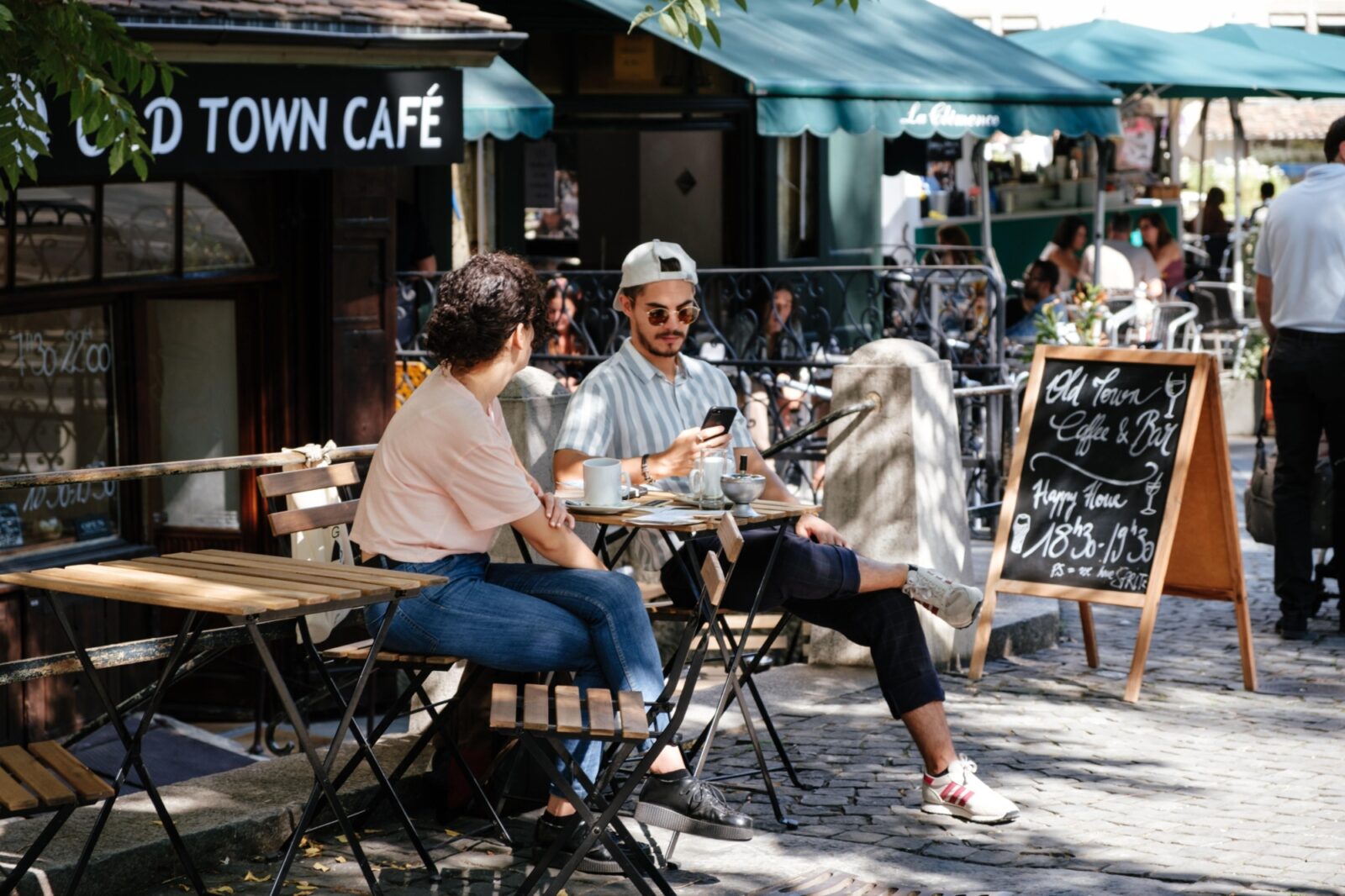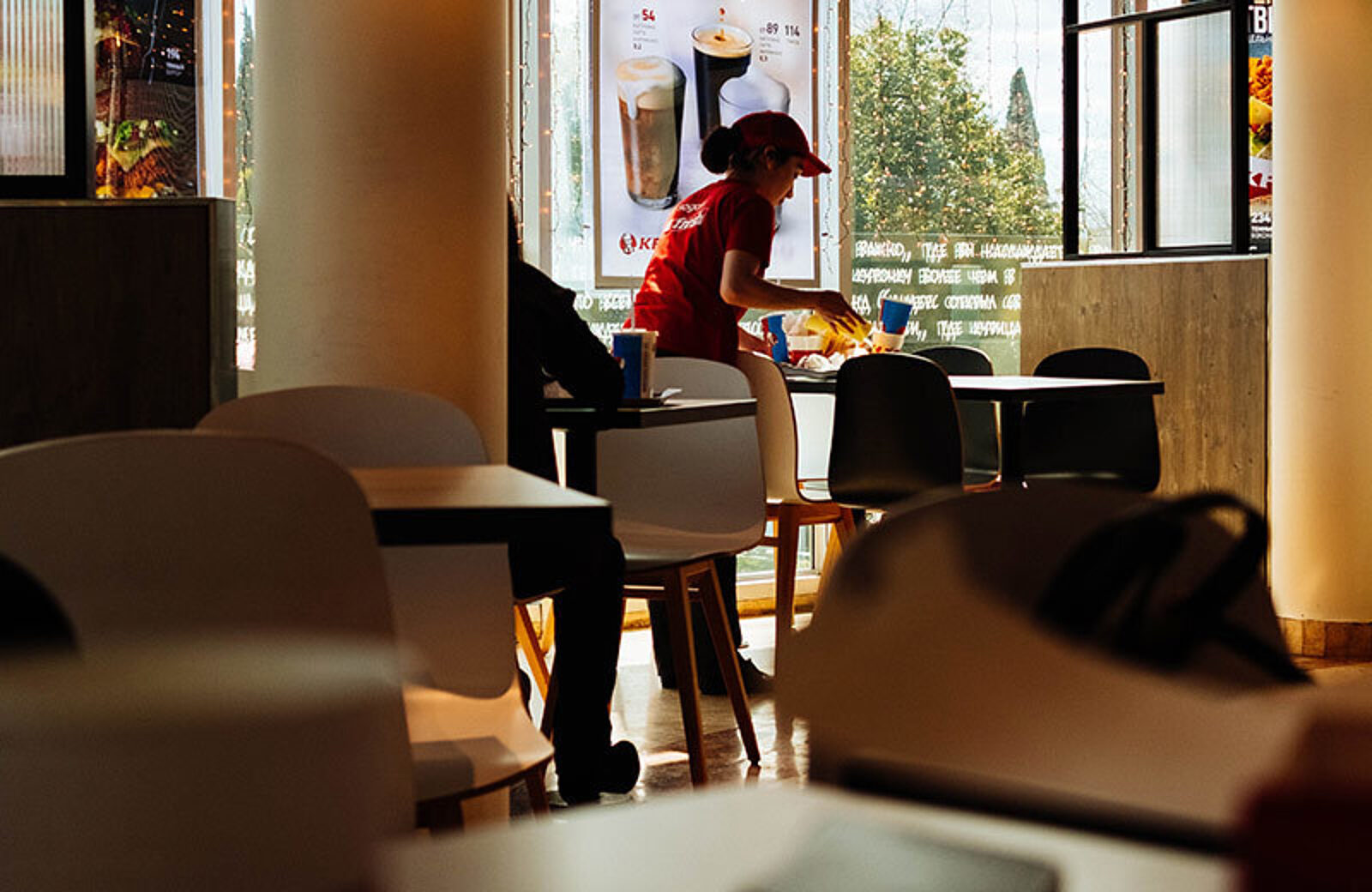
How to Update Your Restaurant Business Model and Generate More Revenue
We've gathered some examples of resilient and adaptable restaurants and food businesses that, against all odds, made it work — and we'll discuss the updates that are likely to stick around long after COVID-19 is over.

Caroline PriceAuthor
Throughout the past year, restaurants have adapted drastically. Early on in the COVID-19 pandemic, on-premise dining shut down, leaving restaurants scrambling to adapt their businesses and survive months of uncertainty.
But creative and resilient restaurant operators tested out different ways to stay afloat.
Many pivoted their restaurant business models entirely, with a heavy emphasis on helping their staff and communities. They also continued to build customer loyalty — despite serious limitations — and gave back to those most affected by the crisis. Many offered new products or new ways of ordering their food and stayed nimble and flexible in the face of an unprecedented situation.
Though these ideas were born out of necessity, many offer new and creative ways of diversifying revenue streams and bringing in income in unique and innovative ways. We've gathered some examples of resilient and adaptable restaurants and food businesses that, against all odds, made it work — and we'll discuss the updates that are likely to stick around long after COVID-19 is over.
Also, this content is for informational purposes only and is not intended as legal, accounting, tax, HR, or other professional advice. You’re responsible for your own compliance with laws and regulations. Contact your attorney or other relevant advisor for advice specific to your circumstances.
Restaurant Website Checklist
This template will help you update and optimize your website, so guests can easily find and order from you.

Rethinking the Restaurant Service Model
COVID-19 forced restaurants to rethink almost everything to increase profitability - especially when it comes to staffing and serving models.
Kevin Healy owns the HOUSEpitality Family Restaurant Group, which includes four locations of The Boathouse and three locations of Casa del Barco located in Virginia. Like most restaurants, in early March, Boathouse Restaurant Group temporarily shuttered all locations. When he reopened, Kevin completely overhauled the service model and moved to the New Steps of Service, powered by Toast Order & Pay QR code technology.
The New Steps of Service uses restaurant technology to let guests choose their dining timeline: combining the traditional touchpoints of hospitality with the efficiencies of technology.
“We were following a model that was set up in the ‘50s and ‘60s with maybe a 10% profit, which is elusive at best,” Kevin explained.
But COVID offered an opportunity to rethink that, he explained. “When we shut down in March, we were operating under the traditional model with servers, and we were happily going along. But I’ve been hearing about the $15 minimum wage and the elimination of tipping, and with COVID I took the opportunity to re-imagine what we were doing.”
Essentially, the new steps of service empowers your guests to order and pay whenever they like. When a guest arrives, they scan a QR code on the table and can input their drink order from their phone, while the server is suggesting specials, filling water glasses, and making recommendations. As the guests are ready, they can order their meals directly from the table, without having to wait for the server to return. At the end of the meal, guests can pay directly on their phone and leave right away, not worrying about waiting for a busy server to bring back a receipt.
By putting ordering and payment technology in the hands of their guests, servers can focus on the hospitality: connecting with and welcoming guests, making menu suggestions, and making sure that guests are happy (while not having to spend time running back and forth to the POS to process payments and swipe credit cards). And since guests can order food and drinks whenever they’re craving them, average check sizes can increase, and guests become pros at using the new system in no time.
Learn more about the new steps of service here, and how to implement this new model in your restaurant.
Pivoting to Pop-Up Grocery Stores or Bodegas
When looking to serve their communities in unconventional ways, some restaurants leveraged existing supply chains and food-service relationships to morph their businesses into bodegas and pop-up grocery stores.
Farmers Restaurant Group, based in Washington, D.C., adapted its restaurants — including Founding Farmers, Farmers & Distillers, and Farmers Fishers Bakers — into food markets called Founding Farmers Market + Grocery. Though Farmers Restaurant Group has since reopened for in-person dining, they are still operating the Founding Farmers Market + Grocery as another revenue stream for the business, allowing them to expand and reach a new audience.
“There’s a reason people cook at home; it’s less expensive,” said FRG owner Dan Simons to National Restaurant News. “The corner market or bodega will be set up within the restaurant… and will sell meal kits cooked by the remaining restaurant staff along with packaged chicken salad, toilet paper, paper towels, wine, beer (in growlers) and other essentials,” Simons said.
During the early days of the pandemic, this kept money coming in and provided their community with high-quality, affordable staples.
Now, it’s another way to promote their gift boxes, brunch at home packages, and delicious catering.
Adding Special Takeout and Delivery Items
Some restaurants got creative with their takeout and delivery offerings, adding special items that function as meal kits for guests to prepare at home to expand their take-out menus.
Monument Charlestown sought creative ways to package its meals to go. It’s offered Make Your Own Pizza Kit, an EBTV (everything but the vodka) take-home Bloody Mary kit, and a taco-making kit Monument calls “Takeout Taco Bell Tuesday.”
Other restaurants tapped into other markets. For example, Inver Grove Brewing is offering take-and-bake pizzas and fried fish, along with “crowlers” of craft beer to go and bottles of their housemade sauces. The Minnesota restaurant and brewery never previously offered online ordering or even takeout, but they quickly pivoted to introduce both on April 1, and have been operating both ever since.
Meanwhile, Guerrilla Tacos in Los Angeles developed an “emergency taco kit,” which includes everything customers need for a taco night, along with the biggest incentive of all during the early pandemic: four rolls of toilet paper.
Even the bigger chains are shifted their offerings to reflect a rapidly changing new normal. Shake Shack introduced Shake Shack’s first-ever steakhouse meal, Steak Frites to go. The restaurant chain developed the offering in partnership with New Jersey meat purveyor Pat LaFrieda. “Looking to elevate your takeout game?” Shake Shack wrote, announcing its plan to serve a to-go meal featuring a 10 oz. Pat LaFrieda ribeye steak cooked medium to medium-rare, served with Shake Shack’s signature crispy crinkle-cut fries, watercress greens, ShackSauce, and horseradish sauce for $24.99.
“With everything going on, we know our guests are wanting accessible dining options without having to sacrifice the fun (and they could sure use the comfort!),” a Shake Shack spokesperson shared with Time Out New York. "We thought this offering would be a great way to bring some excitement to our diners.”
And now, as vaccine distribution increases, Shake Shack is giving free crinkle-cut fries to anyone who shows their vaccination card.
Getting Through 2022 and Preparing for the Future
The past two years have definitely not business as usual for any restaurant. But with a little creativity and adaptability, restaurants and food businesses are showing how they're fighting to make it to the other side of this crisis. And now that the pandemic is moving to the rearview and folks begin exploring opening their restaurant once again, many of these new revenue streams and business models will shift to being part of business as usual.
Related Restaurant Financial Resources
Restaurant Business Plan Template
No matter where you’re at in your restaurant ownership journey, a business plan will be your north star. Organize your vision and ensure that nothing is overlooked with this free template.

Is this article helpful?
DISCLAIMER: This information is provided for general informational purposes only, and publication does not constitute an endorsement. Toast does not warrant the accuracy or completeness of any information, text, graphics, links, or other items contained within this content. Toast does not guarantee you will achieve any specific results if you follow any advice herein. It may be advisable for you to consult with a professional such as a lawyer, accountant, or business advisor for advice specific to your situation.
Read More
Subscribe to On the Line
Sign up to get industry intel, advice, tools, and honest takes from real people tackling their restaurants’ greatest challenges.

